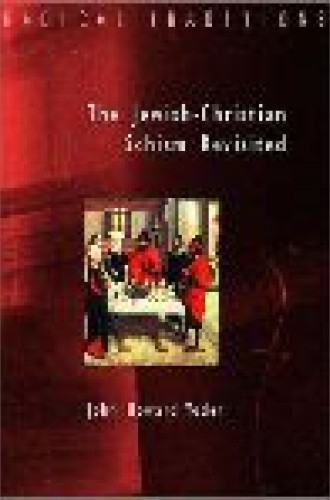The Jewish-Christian Schism Revisited
In 1996, shortly before his death, John Howard Yoder grouped ten essays based on papers he had written in the preceding three decades into what he called the “Shalom Desktop Packet.” The collection circulated among Yoder’s wide circle of colleagues and conversation partners, then was made available online. In The Jewish-Christian Schism Revisited many of these essays appear in print for a broader audience for the first time, accompanied by the unusually rich commentary of Michael G. Cartwright, dean for ecumenical and interfaith programs at the University of Indianapolis, and Peter Ochs, Bronfman Professor of Judaic Studies at the University of Virginia.
The book is testimony to the posthumous influence of Yoder, a Mennonite pacifist who taught in the theology department at the University of Notre Dame and dedicated his career to calling the church to disengage from the power structures of society. Readers familiar with Yoder’s classic The Politics of Jesus will recognize many of the emphases and presuppositions here as he revisits and reenvisions the ancient split between Judaism and Christianity.
“It Did Not Have to Be”—this, the title of the first chapter, aptly sums up the book’s argument: Judaism and Christianity did not have to go their separate ways. The essays provide fascinating snapshots of Yoder’s engagement with paradigm-shifting developments in biblical and Jewish studies in the 1970s and 1980s as scholars recognized the inadequacies of previous understandings of Judaism. Yoder hammers home the importance of recognizing both the diversity within early Judaism and the fact that early Judaism was not equivalent to the rabbinic movement of later centuries. Neither Jesus nor Paul rejected Judaism, and Judaism did not reject Christianity, according to Yoder, at least in the first century.
The parting of the ways between the two traditions did not begin until the Bar Kochba war (132-135 CE), after which an emerging rabbinic Judaism began to distance itself from the messianic movement and the charge of deicide gained currency in Christian circles. The division became sharper with the rise of Christendom under Constantine and the subsequent disempowerment of the Jews. Prior to the schism, Yoder argues, Christianity was an essentially Jewish movement, its distinctive characteristics drawn from its mother religion.
What were those defining features of Jewish identity? According to Yoder, they were a grounding in the experience of the exile; worship and a way of life shaped primarily by a sacred text, not a temple; the nonhierarchical communities of synagogue gatherings; a universalizing vision of salvation that resulted in vibrant missionary movements to the gentiles; an aversion to political power; acceptance of minority status and rejection of violence. It was precisely these traits that were later rediscovered in the wake of the Reformation and adapted, in modified form, by free-church traditions such as those of the Mennonites and Anabaptists. The Radical Reformers and their modern theological descendants are thus in continuity with early Judaism, “the oldest and the toughest ‘peace church.’” Greater attention to these Jewish roots of Christianity, Yoder suggests, will foster greater self-understanding within both traditions, as well as more fruitful dialogue between them.
Cartwright calls these essays Yoder’s “most ambitious—and some would argue, his most deeply flawed—scholarly project.” The description is apt. Yoder’s claims do not reflect a strong familiarity with postbiblical Jewish sources, and his engagement with the biblical materials is extraordinarily selective. The problem is deeper than merely a dearth of footnotes. Yoder’s argument is based largely on his reconstruction of early Judaism, which is one that most historians of the period would not recognize. For example, few would regard pacifism as a distinguishing trait of Judaism on the same level as observance of the Sabbath or keeping kosher. Even more troubling is Yoder’s repeated denial of the centrality of Jerusalem and the land of Israel in the symbolic world of Judaism.
Yoder’s thesis has additional troubling implications: it suggests that the faithful church (that is, the church not compromised by society’s power structures) exhibits traits of first-century Judaism that modern Judaism does not. This latent and unintended supersessionism is ironic in light of Yoder’s passionate pursuit of Jewish-Christian reconciliation.
Still, the book is essential reading for anyone wishing to understand Yoder’s impact on theology and ethics. The fact that its emphasis on the Jewishness of early Christianity now seems uncontroversial is a sign of just how much scholarship has changed in the past few decades. What were daring proposals when Yoder first penned them are now accepted as conventional wisdom.



